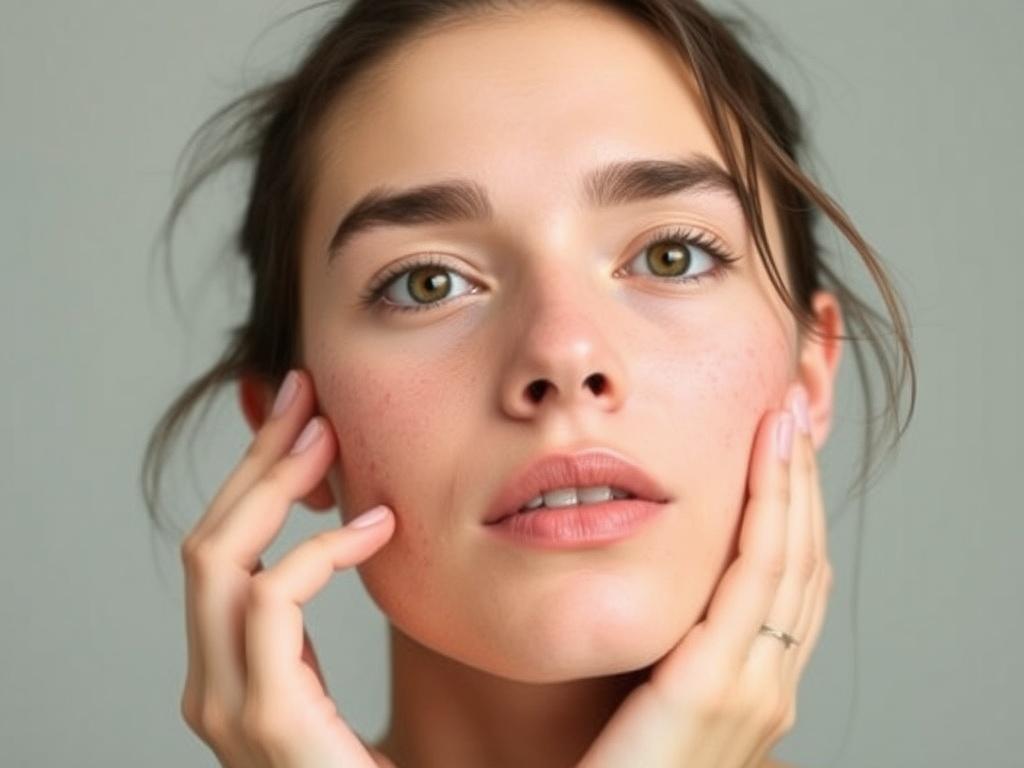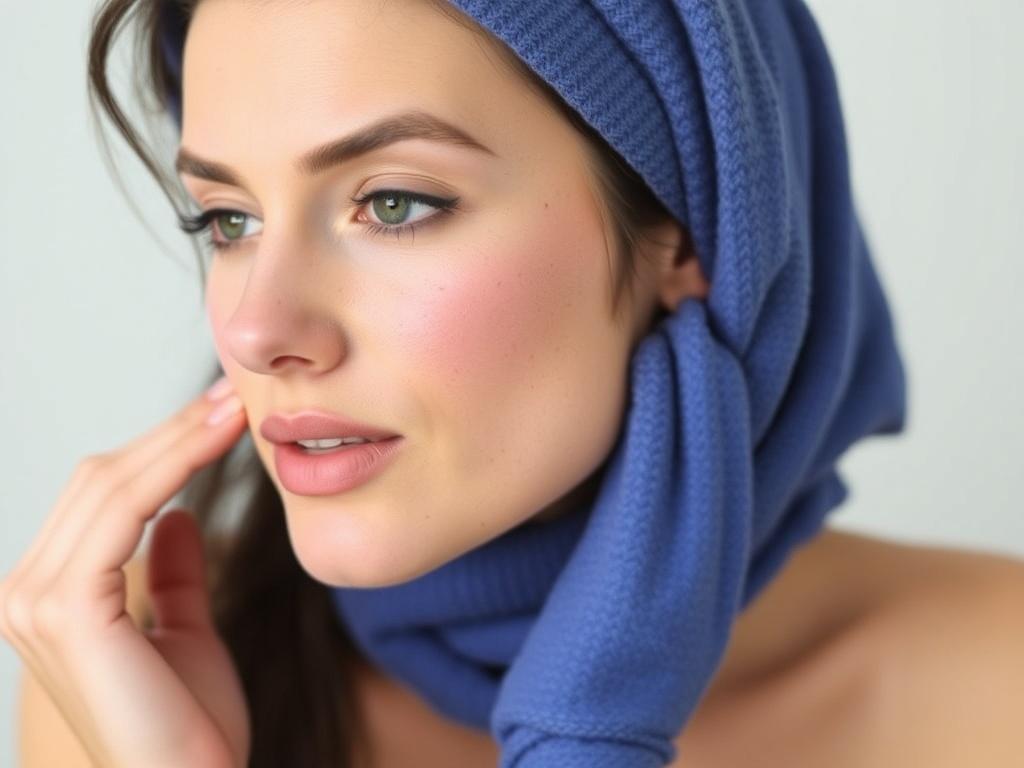Содержание статьи
- 1 Understanding Hormonal Acne: What Is It?
- 2 What Causes Hormonal Acne?
- 3 Recognizing Hormonal Acne
- 4 How to Treat Hormonal Acne Effectively
- 5 Common Myths About Hormonal Acne
- 6 Natural Remedies and Hormonal Acne
- 7 Keep in Mind: Patience and Consistency Are Key
- 8 Summary of Hormonal Acne Causes and Treatments
- 9 Final Thoughts
Hormonal acne is something many people face at some point in their lives, often feeling frustrated and helpless when breakouts keep appearing despite their best efforts. Unlike regular acne, hormonal acne is closely linked to fluctuations in hormones that affect the skin’s oil production and inflammation levels. It’s that stubborn acne that doesn’t just pop up randomly but tends to follow your menstrual cycle, stress levels, or hormonal changes related to age or medical conditions. If you’ve been wondering why your skin is suddenly breaking out and what you can do about it, this article will walk you through the causes of hormonal acne and explore effective ways to treat it.
Understanding Hormonal Acne: What Is It?

Before diving into treatments, it’s important to understand what hormonal acne really is. Simply put, hormonal acne occurs when changes in your body’s hormone levels trigger an increase in oil production within your skin’s sebaceous glands. This excess oil can clog pores and create an environment where bacteria thrive, leading to inflammation and breakouts. While many people associate acne with teenagers going through puberty, hormonal acne can happen well beyond adolescence, even in your 20s, 30s, and beyond.
Hormonal acne typically appears in certain areas of the face where oil glands are most active. These areas include the lower face, jawline, chin, and neck. The breakouts are often painful cysts or nodules deep beneath the skin, making them more difficult to treat than surface-level blemishes.
What Causes Hormonal Acne?
Hormonal acne arises from a complex interaction between hormones, skin oils, and inflammation. Let’s break down the main drivers behind hormonal acne:
1. Androgen Hormones
Androgens are male hormones like testosterone which both men and women have, although in different amounts. When androgen levels rise, the sebaceous glands produce more oil. Excess oil mixed with dead skin cells causes clogged pores, leading to acne. Androgen fluctuations occur naturally during puberty, but they can spike at other times too.
2. Menstrual Cycle
For many women, hormonal acne cycles alongside their menstrual periods. Right before your period, progesterone and estrogen levels drop, while androgens may remain steady or increase. This imbalance can worsen acne symptoms. If this sounds familiar, it’s because many women notice their breakouts just before their period.
3. Stress and Cortisol
Stress isn’t just bad for your mood; it can affect your skin too. When stressed, your body releases cortisol, a stress hormone that can boost oil production and inflammation, triggering or worsening hormonal acne outbreaks.
4. Medical Conditions and Medications
Certain medical conditions like polycystic ovary syndrome (PCOS), and medications like steroids or hormonal contraceptives, can influence hormone levels and lead to hormonal acne flare-ups.
5. Lifestyle and Diet
While this factor is debated, some studies suggest that diet, particularly foods high in sugar or dairy, may contribute to hormonal imbalances and acne severity. Maintaining a balanced lifestyle can sometimes help improve skin health.
Recognizing Hormonal Acne

Not all acne is hormonal, so how do you tell the difference? Here are some common signs and characteristics of hormonal acne:
- Breakouts primarily around the lower face, jawline, chin, and neck.
- Acne appears as deep, cystic, or nodular lesions that are often painful.
- Acne flare-ups tend to coincide with menstrual cycles or periods of high stress.
- Previous acne treatments may have limited success if they don’t address hormonal triggers.
- Onset or worsening of acne in adult years, especially in women.
How to Treat Hormonal Acne Effectively
The good news is that hormonal acne is highly treatable once you understand its causes and target the root issues. Treatment usually involves a combination of skincare, medical therapies, lifestyle changes, and sometimes dietary adjustments. Here’s a comprehensive guide:
1. Skincare Routine for Hormonal Acne
While hormonal acne requires internal management, a good skincare routine plays a vital role in keeping breakouts under control.
- Gentle, Non-Comedogenic Cleanser: Choose a cleanser that removes excess oil without irritating your skin. Look for ingredients like salicylic acid which helps unclog pores.
- Exfoliation: Using gentle chemical exfoliants like alpha hydroxy acids (AHAs) or beta hydroxy acids (BHAs) helps clear away dead skin cells and prevent clogged pores.
- Moisturizers: Even oily skin needs moisturization. Use lightweight, oil-free moisturizers that hydrate without blocking pores.
- Sun Protection: Sunscreen protects your skin and prevents post-inflammatory hyperpigmentation, which can occur after acne clears.
2. Hormonal Treatments
If hormonal acne is persistent or severe, you might need treatments that directly address hormone imbalances.
| Treatment | Description | Pros | Cons |
|---|---|---|---|
| Oral Contraceptives | Pills that regulate hormones and reduce androgen levels. | Effective for many women; also regulates menstrual cycles. | May have side effects; requires a prescription. |
| Spironolactone | A medication that blocks androgen effects on skin. | Helps reduce oil production and clear acne. | Not suitable for men or pregnant women; needs medical supervision. |
| Topical Retinoids | Vitamin A derivatives that speed skin cell turnover. | Improves acne and reduces clogged pores. | Can cause irritation and dryness initially. |
3. Lifestyle Adjustments
Since hormonal acne is closely related to internal factors, certain lifestyle changes can make a meaningful impact:
- Manage Stress: Incorporate stress-reducing practices like yoga, meditation, or regular exercise to keep cortisol levels in check.
- Eat a Balanced Diet: While no “acne diet” has definitive proof, reducing sugary and high-glycemic foods may help some people.
- Get Enough Sleep: Quality sleep supports hormonal balance and skin repair.
- Stay Hydrated: Drinking plenty of water helps your skin stay healthy and clear.
4. When to See a Dermatologist
If you’ve tried home remedies and over-the-counter treatments without success, consulting a dermatologist is a smart move. Dermatologists can diagnose whether your acne is truly hormonal and tailor treatment plans such as prescription medications, hormone testing, or advanced therapies like laser treatments.
Common Myths About Hormonal Acne

There are plenty of misconceptions surrounding hormonal acne that can influence how people approach treatment. Let’s clear up a few:
- Myth 1: Hormonal acne only affects teenagers.
Reality: It can affect adults of all ages, especially women in their 20s to 40s. - Myth 2: Hormonal acne is caused by poor hygiene.
Reality: Acne is not due to dirt but hormone-driven changes in oil and inflammation. - Myth 3: You have to stop all makeup to clear acne.
Reality: Non-comedogenic makeup products can be worn without worsening acne. - Myth 4: Diet has no effect on acne.
Reality: While the science is mixed, some people notice improvements by reducing sugar and dairy.
Natural Remedies and Hormonal Acne
For those interested in natural or holistic options, a variety of remedies may support hormonal balance and skin health:
- Tea Tree Oil: Known for its antibacterial properties, diluted tea tree oil can reduce inflammation.
- Zinc Supplements: Zinc helps reduce inflammation and supports immune function.
- Spearmint Tea: Some studies show that drinking spearmint tea may lower androgen levels and reduce acne.
- Omega-3 Fatty Acids: Found in fish oil supplements, they reduce inflammation and promote healthy skin.
Note that natural remedies should complement, not replace, medical treatment, especially if acne is severe.
Keep in Mind: Patience and Consistency Are Key
Hormonal acne doesn’t clear up overnight. Whether you’re just starting a new skincare routine or beginning medical treatments, give your skin time—typically 6 to 12 weeks—to show visible improvements. Consistency with treatments and lifestyle habits will yield the best results.
Summary of Hormonal Acne Causes and Treatments
| Aspect | Details |
|---|---|
| Causes | Androgens, menstrual cycle fluctuation, stress (cortisol), medical conditions like PCOS, diet and lifestyle factors. |
| Common Signs | Breakouts on jawline, chin, neck; deep cysts; flare-ups linked to menstrual cycle or stress. |
| Treatment Options | Topical cleansers and retinoids, oral contraceptives, spironolactone, lifestyle changes, professional dermatology care. |
| Complementary Approaches | Natural remedies such as tea tree oil, zinc, spearmint tea, and omega-3 supplements. |
Final Thoughts
Hormonal acne can feel overwhelming, particularly when it won’t respond to typical acne treatments. However, understanding that hormonal acne stems from how your body’s hormones influence oil production and inflammation gives you a powerful starting point. By approaching treatment with patience, consistency, and a combination of medical and lifestyle strategies, you can take control and gradually restore clearer, healthier skin. Remember, each person’s skin is unique, so don’t hesitate to seek guidance from healthcare professionals and tailor your approach to what works best for you. With the right knowledge and persistence, hormonal acne doesn’t have to rule your life or your complexion.


